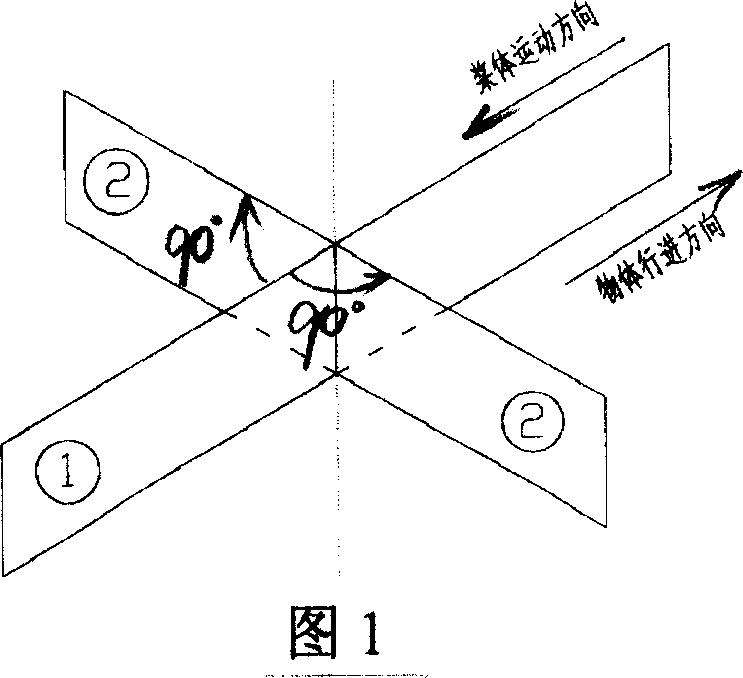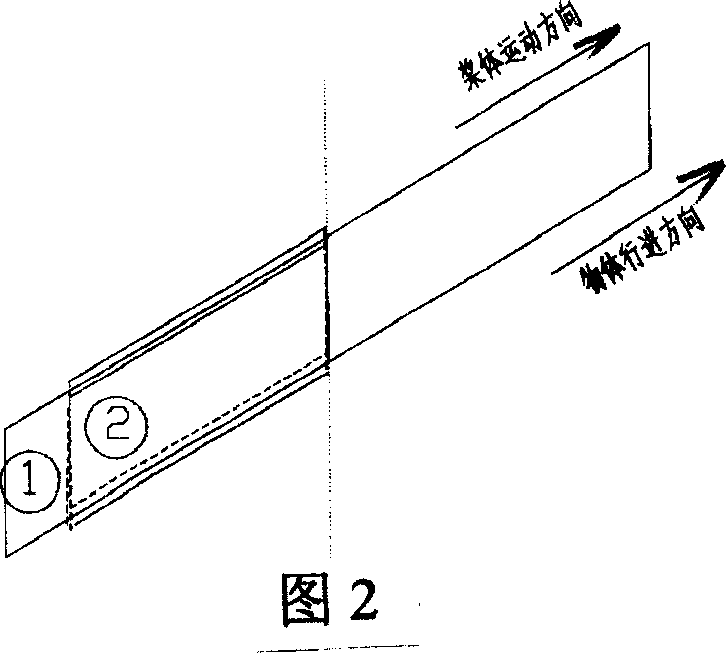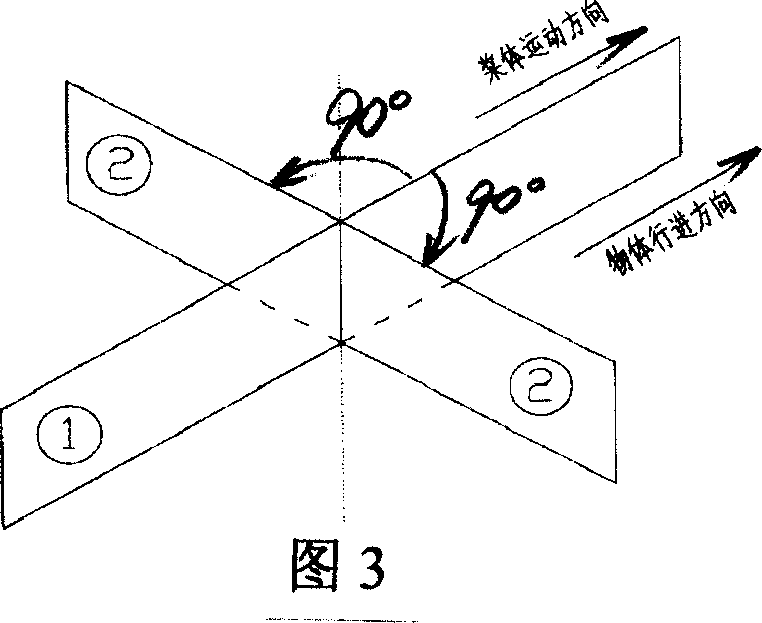Flat stacking type propulsion device
A propulsion device, a technology of flat push, applied in the direction of non-rotating propulsion elements, etc., can solve the problems of time-consuming and troublesome turning, unstable operation, large shape resistance, etc., and achieve the effect of large thrust, stable operation and small running resistance
- Summary
- Abstract
- Description
- Claims
- Application Information
AI Technical Summary
Problems solved by technology
Method used
Image
Examples
Embodiment 1
[0012] Embodiment 1: Referring to Figure 5, the propulsion device of this embodiment adopts a single-side paddle type, and the paddle is installed on the lower side of the paddle body, and the paddle can rotate freely forward and backward in a limited manner with the joint part of the paddle body as the axis, and rotate forward The blade is opened, the blade surface is perpendicular to the paddle body, and the blade is folded backwards, and the blade surface is attached to the paddle body; the propulsion device is installed at the bottom of the propelled object, and the paddle body is connected with the power device through the transmission device, and the power device drives the paddle The body reciprocates back and forth on a fixed track. When the paddle body moves forward, the blade is folded backward under the action of water resistance, and the blade surface is attached to the paddle body, forming the minimum cross-section against the water in the forward direction, and mov...
Embodiment 2
[0013] Embodiment 2: Referring to FIG. 6, the difference between this embodiment and Embodiment 1 is that the propulsion device adopts a double-sided blade type, and the blades are symmetrically installed on both sides of the paddle body, and the paddle body is connected with the power device through a transmission device. The power device drives the paddle to reciprocate back and forth on the track, and drives the paddle to repeatedly push the water backwards, thereby pushing the object forward.
Embodiment 3
[0014] Embodiment 3: Referring to FIG. 7, the difference between this embodiment and Embodiment 1 is that the propulsion device adopts an alternate water pushing type, and the blades are divided into two groups, which are respectively installed on two paddle bodies, and the two paddle bodies They are respectively connected to the power device through two transmission devices. When the power device drives one paddle body to move forward, the other paddle body moves backward, thus driving one set of paddles to open and push water, while the other set of paddles is folded state, the two sets of paddles alternately push the water, thereby pushing the object forward.
[0015] Changing the opening direction of the blades, the propulsion devices of the above embodiments 1, 2, and 3 can all realize deceleration, stop or reverse travel, and can solve the problems existing in the propeller propulsion devices of the prior art. Compared with the propeller propulsion devices, the flat The ...
PUM
 Login to View More
Login to View More Abstract
Description
Claims
Application Information
 Login to View More
Login to View More - R&D
- Intellectual Property
- Life Sciences
- Materials
- Tech Scout
- Unparalleled Data Quality
- Higher Quality Content
- 60% Fewer Hallucinations
Browse by: Latest US Patents, China's latest patents, Technical Efficacy Thesaurus, Application Domain, Technology Topic, Popular Technical Reports.
© 2025 PatSnap. All rights reserved.Legal|Privacy policy|Modern Slavery Act Transparency Statement|Sitemap|About US| Contact US: help@patsnap.com



